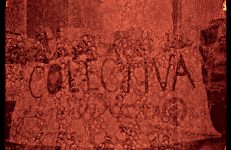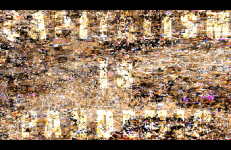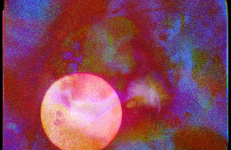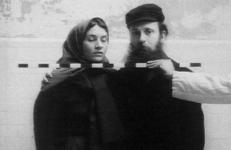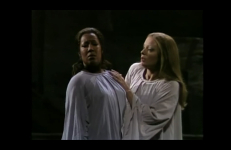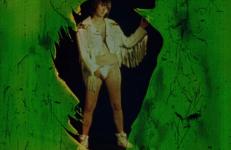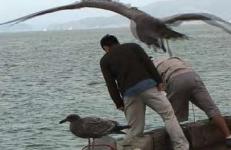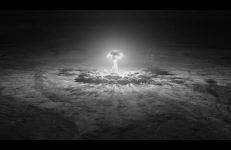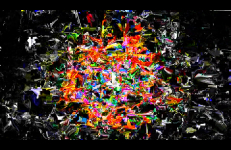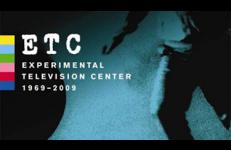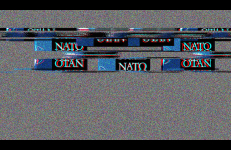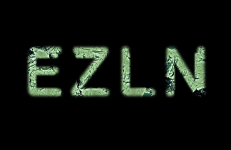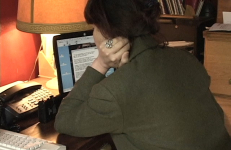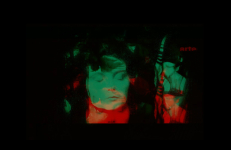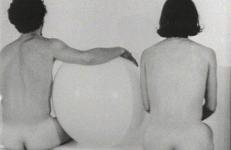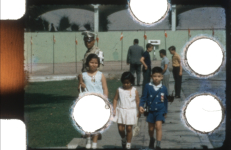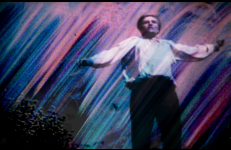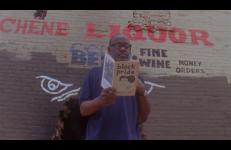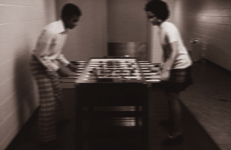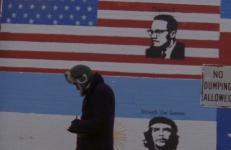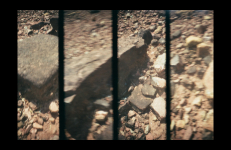In Dry Blood (Sagre Seca), various historical moments of political activism in Mexico are superimposed and corroded on the emulsion of expired film. Footage from the International Women's Day in 2017 is coupled with the recording of a powerful speech about the gruesome aftermath of the 2006 civil unrest in San Salvador Atenco.
Experimental Film
The supposed existence of a golden kingdom motivated numerous expeditions, and the belief remained in force until the 19th century, although its location moved from Colombia to the Guianas, as the process of conquest and colonization of the South American territory progressed. A journey and a drift from extractive colonialism that is far from over.
In the nest of the sun, Xolotl, Huitzilin and Xochitl meet to recover the dance of radiation, whose colorful heat stirs the new fire of their cosmic dance. Part of the Film Tonalli.
Between 1892 and 1927, almost 16 million people came to Ellis Island attempting to immigrate to the United States.
Between 1892 and 1927, almost 16 million people came to Ellis Island attempting to immigrate to the United States.
Encounters I May Or May Not Have Had With Peter Berlin deals primarily with monumentality, narcissism and the ways in which our heroes are embedded into our identities, and manifested through the body. Through a variety of gestures, the pervasiveness of this practice is highlighted alongside its ultimate, inevitable failure. The viewer moves through various stages of anxiety, idolization and actual touchdown with 1970s gay sex icon Peter Berlin himself, capturing both the apparent and the hidden.
Endless Dreams and Water Between is a feature film with four fictitious characters sustaining an epistolary exchange in which their “planetary thought” is woven with the physical locations they inhabit, visual and aural characters in themselves: the island of Manhattan, the island of Majorca, in Spain, and the islands and peninsula that form the San Francisco Bay Area. The characters’ reflections and dreams enact what could be described as “an archipelagic mind,” linking worlds, time, and space.
Part of paraconsistent sequence series and the hauntology series.
The Pyramid used to be a mountain.
"In the film, images of plants, rocks and occasional mountaintops flicker by so quickly they almost evade perception. Extreme colour-tinted close-ups and the use of a rhythmic, drum-forward jazz soundtrack create an effect of a syncopated collage of geometric forms. The collective seems to call into question the audience’s ability to ascertain the significance – whether historical or geographical – of the vaguely identified, eroded sites presented."
–Ela Bittencourt, Frieze
ETC: Experimental Television Center 1969-2009 is a five-DVD box set presenting the electronic media work of over one hundred artists who participated in the Center’s Residency Program during a 40-year period. The collection offers a look at the evolution of the unique artist-designed sound and image tools that are the hallmark of the Center’s studio, and provides a view into the constantly changing artistic processes and practices that have shaped the work over the years.
This is an agitprop piece on resistance from the autonomy and indigenous sovereignty that hold in his own name, in his own letters, in his own sparks and embers of letters.
In collaboration with art historian Dore Bowen, a video recording of her phone interview with Yoko Ono during which a discussion of John Cage and chance operations intervene. Shot in 2002, this document was released in 2007.
Fifeville is a film about a neighborhood in Charlottesville, Virginia. It focuses on the details, gestures, and material life of the citizens of Fifeville as they communicate their understandings of the neighborhood’s changing landscape. Although Fifeville is set in Charlottesville, it could be Any Black Community Experiencing Gentrification, USA, 21st Century.
Co-director: Corey D.B. Walker. Crew: bh103a.
A compilation of five early short films made between 1966 to 1969.
Hand Movie 1966, 6:00, b&w, silent, 8mm
Close-up of a hand, the fingers of which enact a sensuous dance. Camerawork by William Davis.
Volleyball (Foot Film) 1967, 10:00 b&w, silent, 16mm
A volleyball is rolled into the frame and comes to rest. Two legs in sneakers, seen from the knees down, enter the frame and stand beside it. Cut to new angle, same characters and actions. Camerawork by Bud Wirtschafter.
This is the state of bodies, this is the intermittence of bodies, this is the fragile reminiscence of bodies. The flashing fragility of images. The intermittent projection of the nuclear catastrophe to come. This is something on the way.
A figure crosses, runs and flees through the cinematic space, there is no way out. The imminent catastrophe looms. With images by Dovjento and music by Stravinsky. Part of paraconsistent sequence series and the hauntology series.
Fluid Frontiers is the fifth and final film in the series entitled The Diaspora Suite, exploring Asili’s personal relationship to the African Diaspora. Shot along the Detroit River, Fluid Frontiers explores the relationship between concepts of resistance and liberation, exemplified by the Underground Railroad, Broadside Press, and artworks of local Detroit Artists.
Based on a photograph taken in the mid 1970s of two African Americans playing foosball.
This title is only available on Can You Move Like This: Black Fire.
Based on a photograph taken in the mid 1970s of two African Americans playing foosball.
This title is only available on Can You Move Like This: Black Fire.
The Diaspora Suite
Filmed on location in Harlem (NY) and Ethiopia, Forged Ways oscillates between the first person account of a filmmaker, a man navigating the streets of Harlem, and the day to day life in the cities and villages of Ethiopia.
Planetary battle over the porous body of the earth. This is the battle of the Earth.




